This video shows images of Jupiter’s moon Io in radio (made with ALMA), and optical light (made with Voyager 1 and Galileo missions). The ALMA images were taken when Io passed into Jupiter’s shadow in March 2018 (eclipse), and from Jupiter’s shadow into sunlight in September 2018. These radio images for the first time show plumes of sulfur dioxide (in yellow) rise up from the volcanoes on Io.
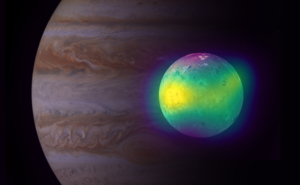

VLBA Finds Planet Orbiting Small, Cool Star
Using the supersharp radio “vision” of the National Science Foundation’s continent-wide Very Long Baseline Array (VLBA), astronomers have discovered a Saturn-sized planet closely orbiting a small, cool star 35 light-years from Earth. This is the first discovery of an extrasolar planet with a radio telescope using a technique that requires extremely precise measurements of a star’s position in the sky, and only the second planet discovery for that technique and for radio telescopes.
This artist’s illustration shows how the star’s motion around the center of mass between it and the planet causes a “wobble” in its motion through space. The VLBA’s ability to detect this minuscule effect revealed the presence of the planet.
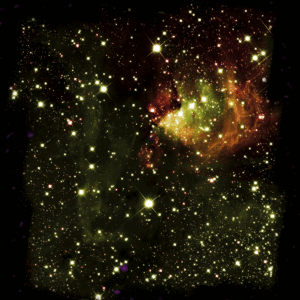
ALMA Mosaic Star Cluster (animated gif)
This animated gif shows the structure and motions (speed in direction towards the Sun) of gas in the forming cluster G286.21+0.17, as seen with ALMA (purple) on top of the infrared Hubble image. The color-scales from pink-purple to blue-purple represent the gas moving at different velocities, from 15km/s to 24 km/s. These motions are controlled by gravity, turbulence and wind and radiation pressure “feedback” from the new-born stars.
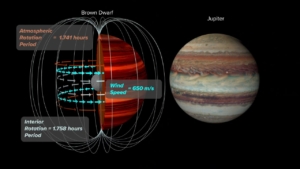
Animation: Measuring a Brown Dwarf’s Wind Speed
Animation illustrates the technique astronomers used to measure the wind speed on a brown dwarf 34 light-years from Earth. The rotation period seen with VLA radio observations differed from the rotation period seen with the Spitzer infrared telescope, and the difference allowed calculating the wind speed.
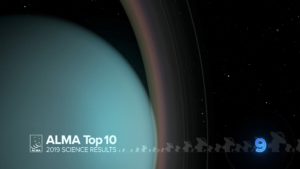
09 – ALMA Top 10: Planetary Rings of Uranus ‘Glow’ in Cold Light
Using the both ALMA Observatory and the Very Large Telescope in Chile, astronomers have imaged the cold, rock-strewn rings encircling the planet Uranus. Rather than observing the reflected sunlight from these rings, ALMA and the VLT imaged the millimeter and mid-infrared “glow” naturally emitted by the frigidly cold particles of the rings themselves.
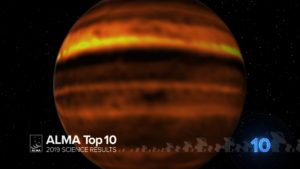
10 – ALMA Top 10: Inside Jupiter’s Storms
Swirling clouds, big colorful bands, giant storms, here is the beautiful and turbulent atmosphere of Jupiter in radio waves.





